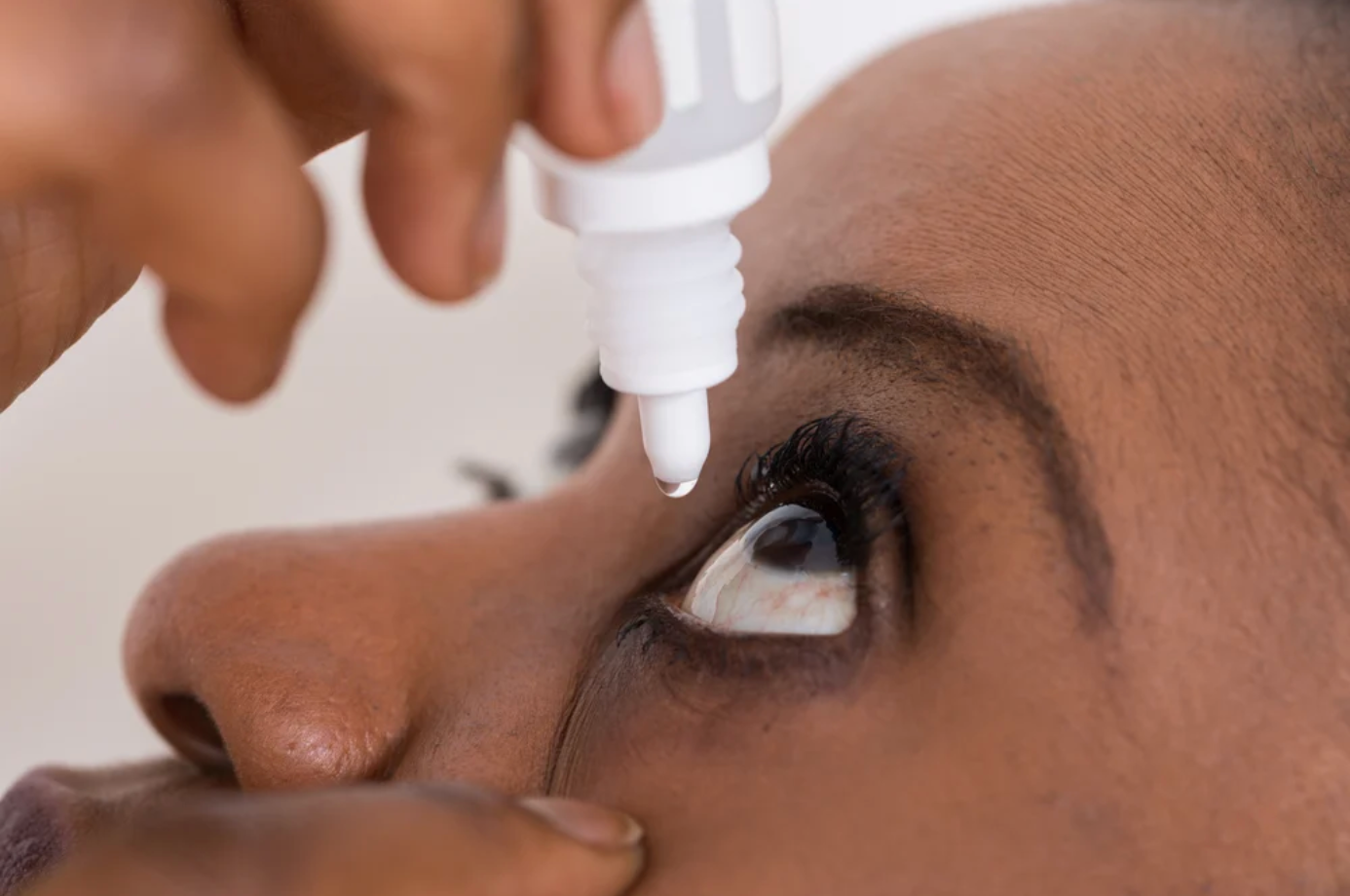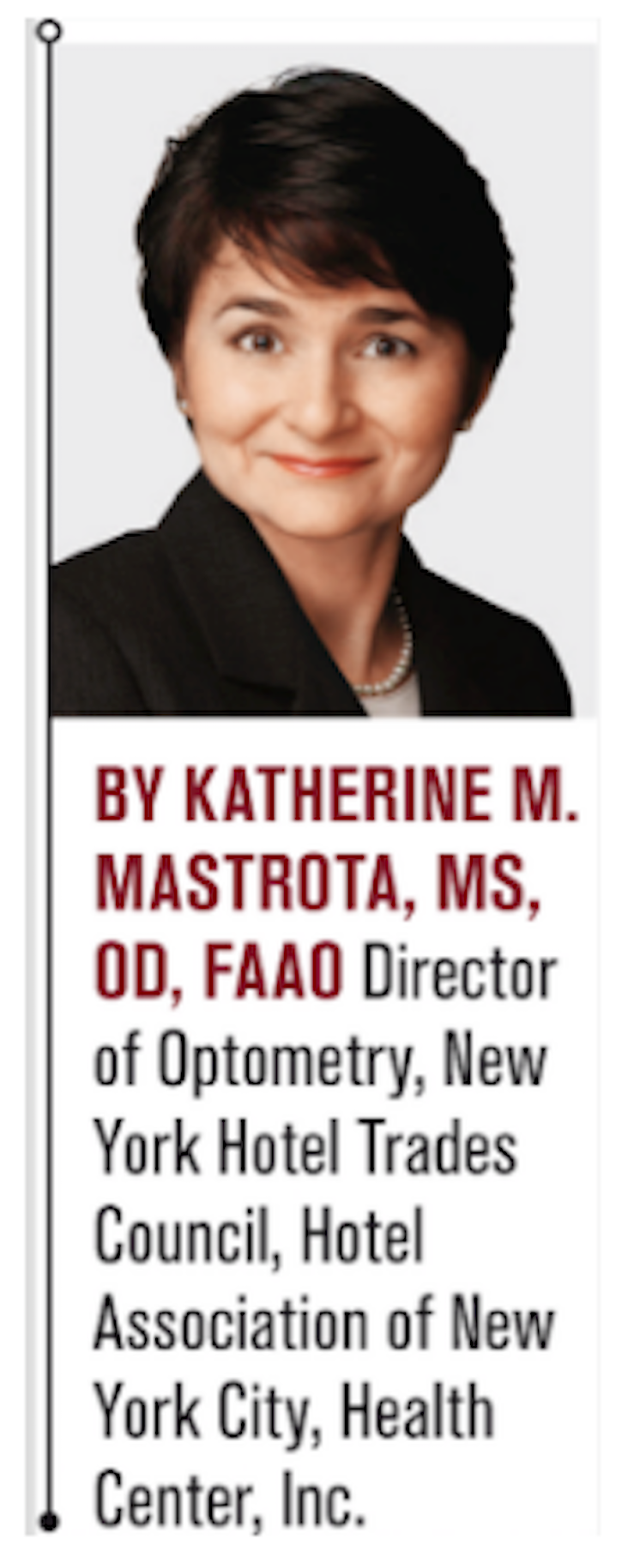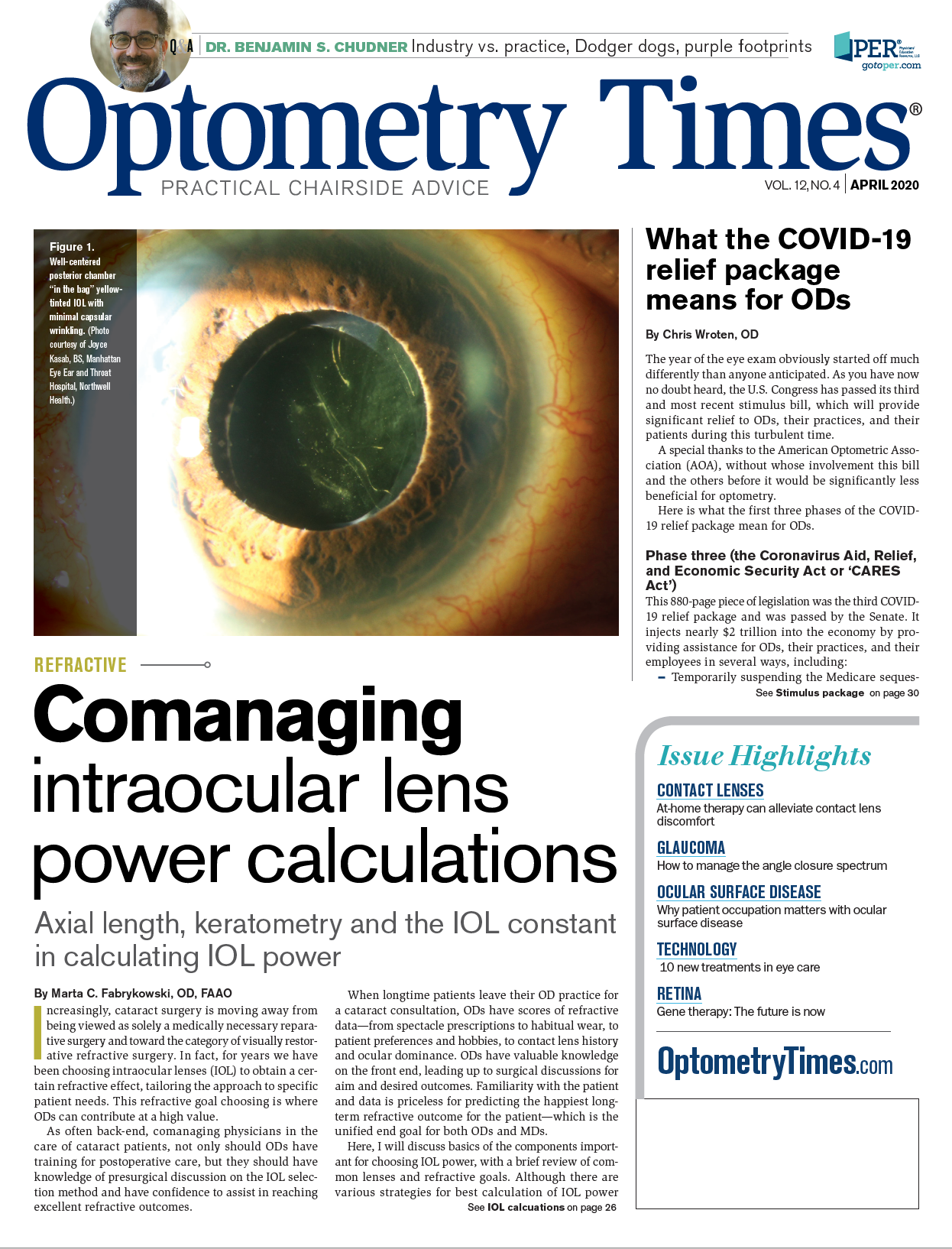Why patient occupation matters with dry eye disease
Asking patients about occupation can lead ODs into new diagnosis territory


Asking patients to disclose occupation information should be standard in any OD’s practice. Why? A person’s occupation discloses a lot of useful information, such as level of education, socioeconomic status, potential lifestyle habits, occupational hazards, and most importantly, probable causes of disease.
For me, dry eye history is at the core of developing a profile for my ocular disease patients. One of the most important questions I ask is about the patient’s occupation. How and where does the patient spend his waking, work hours? Inside, outside, office, operating room, art studio, classroom, nail salon, supermarket, kitchen, health club, airplane, factory, laboratory, hair salon, arena, fire station?
I care for housekeepers, cooks and bartenders, doormen and concierges, executives and dishwashers, desk agents and room servers. My patients work in the hospitality industry in the finest venues in New York City. Each environment impacts their ocular surfaces in different ways. The dryness of the hotel room, the heat in the kitchen, the hours on the computer, the cleaning agents and particles from linen, rugs and towels are elements to be considered as challenges to tear film integrity.
Related: 6 steps to establish an OSD advocate in your practiceLook at the research
An electronic medical records-driven, data analytics report was built to understand the incidence, demographics, types, and risk factors of dry eye disease (DED) in patients presenting to an ophthalmology hospital network in India.1 This observational study of 1,458,830 patients presenting between 2010 and 2018 included patients with recent onset of symptoms as defined by TFOS Dry Eye Workshop. Study results indicated that age, gender, residence, occupation, and socio-economic status have significant impact on development of DED.
Odds ratios (OR) are a measure of association between exposure and outcome. The OR represents the odds that an outcome will occur, given a particular exposure. When compared to the odds of an outcome occurring in the absence of that exposure, an OR >1 indicates increased occurrence of an event. Other high-risk factors for DED include age (OR 3.7 to 13.5), urban residence (OR 1.6), professional work (OR 1.5); homemaking (OR 1.42), retirement/unemployment (OR 1.24) and socio-economic affluence (OR 1.6 to 3.2) were identified as high risk-factors for developing DED.
Related: How to create an ocular surface disease treatment protocol
A separate study in the Netherlands proposed that environmental factors play an important etiological role in dry eye and investigated the relationship between types of occupations and symptomatic dry eye.2 Some 40,501 employed people working ≥8â¯hours a week were included from the population-based cohort. Logistic regression was used to determine the association.
The results of this study suggest professionals (e.g. legal, health, and business and administration professionals), OR 1.14, and clerical support workers, OR 1.14, had the highest risk of dry eye of all 10 major occupation groups. Building workers and metal and machinery workers, also showed elevated risk of dry eye with OR 1.12. Skilled agricultural workers (OR 0.57) and elementary occupations carried the lowest risk.
Related: Your glaucoma patients also have ocular surface disease
More specific occupational dry eye risk studies exist. For example, a recent study describes ocular surface and tear film changes in workers exposed to organic solvents used in the dry-cleaning industry.3 Such workers are commonly exposed to different occupational hazards and chemicals that may affect their eye health in particular. Organic solvents used in dry cleaning are associated with changes in ocular surface and tear film, generating irritation symptoms commonly present in evaporative dry eye. Study authors speculate that eye symptomatology was stimulated by the organic solvent exposure.
Sick Building Syndrome
Sick Building Syndrome (SBS) is important to consider for patients who are based in particular working locations. There are physical, biological, chemical, and psychosocial contributors to SBS. These factors facilitate the emergence of SBS symptoms, creating negative effects for occupants including nasal, ocular, oropharyngeal, and cutaneous irritation. On the contrary, healthy building concepts, or those that are built for workers’ well-being, sidestep working condition concerns because they maintain internal air quality and thermal control, maximize the use of daylight, and provide a workplace that is compliant with the occupants’ ergonomics.
Related: Better manage nocturnal lagophthalmos for dry eye patients
Strategies to improve SBS concerns include proper ventilation system design, careful room layouts arrangement, sanitation frequency, mold/dampness reduction, installation of external devices on openings such as sunshades, development of green buildings, and visual/physical access to nature.4
Related: New guidelines in OSD evaluation before surgery
A green building refers to both a structure and processes integrated into the building’s lifestyle that are environmentally responsible and resource-efficient: from planning to design, construction, operation, maintenance, renovation, and demolition. The Green Building practice expands and complements the classical building design concerns of economy, utility, durability, and comfort.5
These studies underline the importance of asking about patient occupations when accessing for dry eye. Screening forâ¯symptomaticâ¯dry eye in high risk occupations such as building workers and indoor occupations with high screen use is relevant from an occupational health and work productivity perspective. Environmental modifications and palliative therapies should be discussed and introduced to these patients as part of dry eye management strategies.
More by Dr. Mastrota: Why OAB should be considered before cataract removal
References:
1. Donthineni PR, Kammari P, Shanbhag SS, et al. Incidence, demographics, types and risk factors of dry eye disease in India: Electronic medical records driven big data analytics report I. Ocul Surf. 2019 Apr;17(2):250-256.
2. Bazeer S, Jansonius N, Snieder H, Hammond C, Vehof J. The relationship between occupation and dry eye. Ocul Surf. 2019 Jul;17(3):484-490.
3. Jiménez Barbosa IA, RodrÃguez Alvarez MF, Dussán Torres GA, Khuu SK. Ocular surface and tear film changes in workers exposed to organic solvents used in the dry-cleaning industry. 3. PLoS One. 2019 Dec 9;14(12):e0226042.
4. Ghaffarianhoseini A, Alwaer H, Omrany H, et al. Sick building syndrome: are we doing enough? Arch Sci Rev. 2008 May; 61(3):99-121.
5. Wikipedia. Green building. Available at: https://en.wikipedia.org/wiki/Green_building. Accessed 4/1/20.

Newsletter
Want more insights like this? Subscribe to Optometry Times and get clinical pearls and practice tips delivered straight to your inbox.